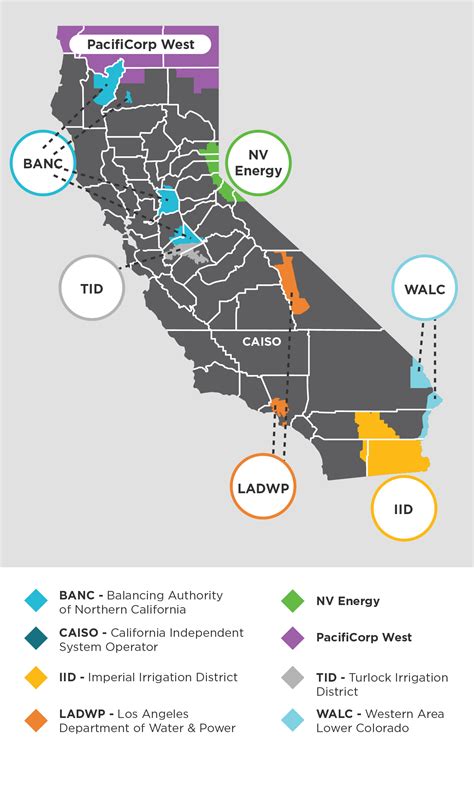California’s recent stance on community solar projects has once again spotlighted the contorted battleground of energy politics in the state. PG&E, the state’s largest utility monopoly, seems to have a knack for getting its way, often at the expense of more sustainable and equitable energy solutions. The problematic relationship between PG&E and California’s policymakers often portrays a grim picture where innovation is stifled in favor of maintaining the status quo.
When you think about local energy generation, particularly within community solar projects, who stands to lose? It’s the traditional utilities like PG&E that find decentralization a threat. With special pricing structures often required to ensure equity in energy distribution, the politics of hooking up private solar power to the grid becomes riddled with complications. Yet, it’s clear that leaving these initiatives unchecked stifles growth and undermines the state’s energy equity goals.
The voices within the public discourse highlight the uneven playing field faced by marginalized communities. Many argue for ‘Electron Justice’ to ensure that low-income and underrepresented groups benefit equally from clean energy solutions. The BIPOC and LGBTQ communities, historically impacted by inefficient policies, should be at the forefront of these discussions. Ensuring equitable access to solar-generated power isn’t just morally right; it’s an indispensable part of an inclusive renewable energy future.
California’s complex energy landscape isn’t helped by its numerous, often contradictory, policies. On one hand, the state has some of the highest energy prices in the nation. On the other, the rates do little to secure a resilient grid capable of withstanding extreme weather events, unlike states such as Texas or Washington. It’s a double-edged sword where high costs don’t translate into equally high efficiencies or reliability. For businesses, particularly those reliant on heavy energy consumption, this is an ongoing financial strain that drives them out of state.
A significant part of the issue lies in the state’s early adoption of an electricity market system, which in many ways, was a pilot project for other regions. While offering valuable lessons, these early attempts were fraught with issues, leaving the local grid less stable. Inefficiencies were spotlighted during the infamous Enron debacle, forever changing the landscape. The policy mistakes from that era still reverberate today, pushing us toward a re-imagined future.
Technological improvements offer a glimmer of hope. Increased electrical efficiency, driven by advancements in LED lighting, LCD screens replacing CRTs, and energy-efficient appliances, has somewhat alleviated demand pressures. However, as pointed out by experts, demand is increasing. The efficiency of devices does not negate the sheer volume of energy needed for a growing population. Instead, it demands a rethinking of how we generate and distribute power.
Commenters from across the board agree that today’s energy market in California is more than a mere economic problem; it’s a societal one. The outsourcing of pollution to other states, the high energy imports/exports, and the state’s significant renewable projects all point to a fragmented approach that needs cohesiveness. One solution gaining traction is the concept of microgrids and municipal utility formation. Decentralized energy models are less susceptible to large-scale failures and can be more adaptive to local needs.
California’s ambivalence towards its grid management also affects its ability to sustain long-term infrastructure investments. The move towards individualized energy solutions like home solar panels and battery storage systems, exemplified by Tesla Powerwall’s popularity, reflects a loss of faith in traditional utilities. While these personal solutions are effective for some, they are not universally accessible due to cost barriers, illustrating the larger economic inequities within the state’s energy policies. The recent subsidy adjustments aimed to level the field but often fall short.
Some argue for a complete overhaul, suggesting that the state should have taken over PG&E during its bankruptcy phase to better align with public interests. The multifaceted ownership structure of infrastructure complicates matters, making this solution attractive, yet impractical in many aspects. However, implementing a clearer, more balanced grid fee system could alleviate some of the distrust, ensuring that costs are transparently and equitably distributed.
In conclusion, California’s energy struggle is a microcosm of larger, pressing global issues regarding sustainability and equity. While technological advancements hold promise, policy reforms must pave the way for these innovations to realize their potential. Stakeholders must strive for a holistic approach to energy management, one that includes equitable access, robust infrastructure, and adaptable policies that reflect our current environmental and economic realities. Until then, California’s ambitions for a green future will remain stymied by its present-day compromises.


Leave a Reply